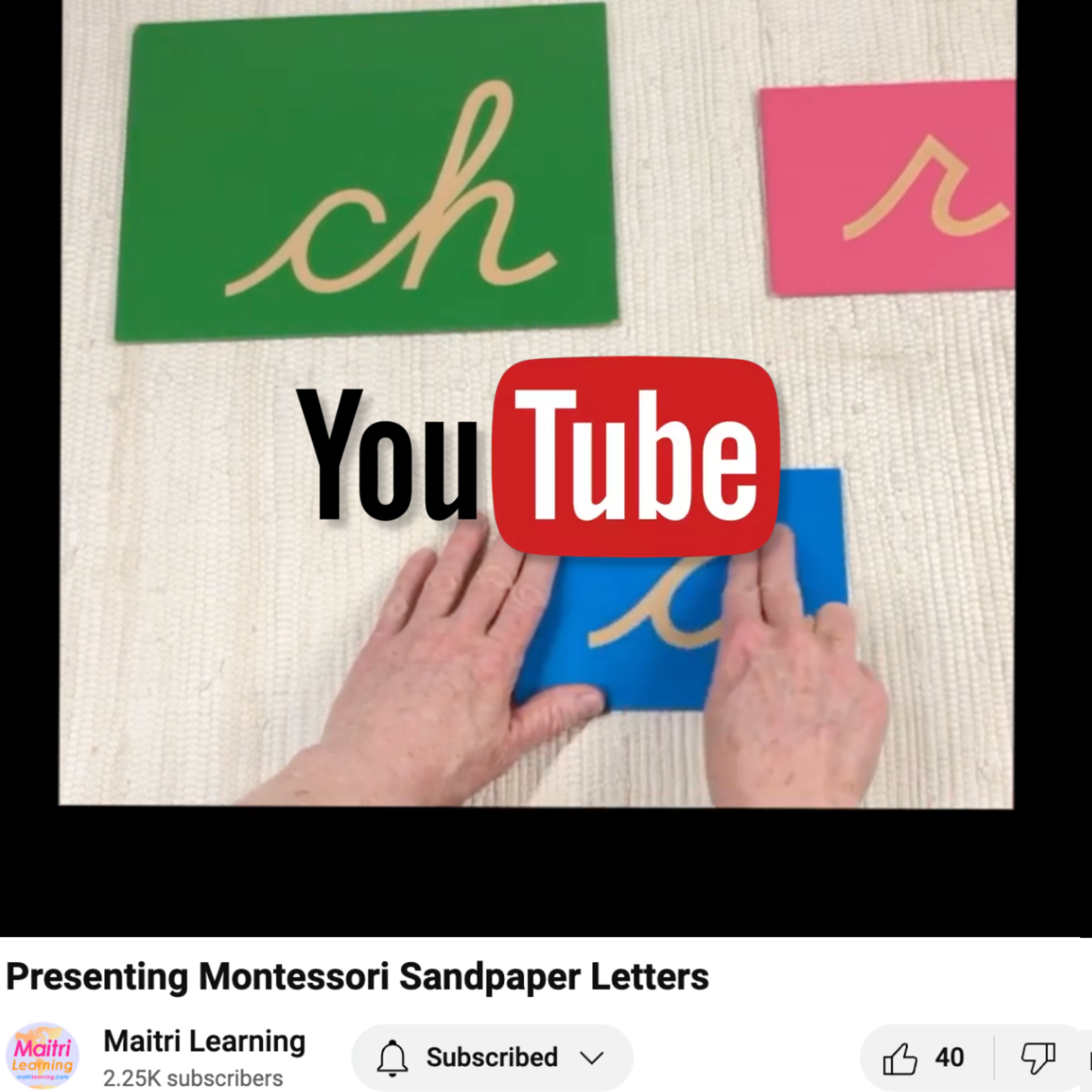Reopening Best Practices
Everyone is busy figuring out or enacting their pandemic reopening plan. I thought it would be helpful to post the things other early childhood schools are doing that work.
As I reached out to schools, I found a lot of ideas I hadn't thought of before; like using a hula hoop to help children maintain social distance when walking in line!
Thanks to Riverbend School in Natick, MA for letting us share their video of hula hoop distancing.
Of course, when you develop your own plan, you'll have to consider your licensing/state requirements. There is no one-size-fits-all way to 'pandemify' your school procedures. That's why we need a lot of ideas!
The following ideas are compiled from schools with an early childhood component in the US and France. Please add your own experiences in the comments below (including your location). Together we can compile the best practices that work in different situations (and with different licensing requirements). It takes a village!
Adjust your Expectations
Everyone is under a tremendous amount of stress. That means we have lost some of our executive function abilities to remain skillful (has anyone else noticed everyone snapping at each other more these days?). Try to keep your heart light as you notice this, especially when you are the one being less skillful!
You might find that the children are spending more time running around the outdoor environment than focused on "purposeful work." This is not a problem. The exercise and outdoor time will help them regulate their stress. Work in spoken language lessons (especially music and poems) whenever you can. Feel free to get playful with them! A good game of 'run around the play area without bumping into anything' might be just the thing to help turn your day around!
In all things, let compassion be your first response; all wisdom flows from there.
This is especially true for our interactions with families. Here's what my friend Susan Banon (Ecole Montessori rue Papin in Paris) says:
"The children should be at the center of our attention but we need to remember the parents. If we can help them deal with their stress, and reassure them that we are working towards the child's best interest, that will in turn help with our challenge to 're-open'."
Arrival
With our families in mind, arrival becomes even more important. This is a critical time of day when we need to be gracious, welcoming, and reassuring while also being vigilant in screening for visible signs of illness. Screening may be the most important part of our pandemic procedures. To balance the unavoidable rigidity of the list below, try greeting each new arrival with a bow. Then, after this pause and a smile, begin your procedure. Here are some ideas for what to include.
- Stagger arrival and departure times.
- Set up a covered area outside for arrivals/departures so that parents do not need to enter the building. (Parents should only enter the building for scheduled appointments.)
- Use inspiring/fun markers to indicate six feet of distance for waiting areas (maybe pictures of kittens, beautiful areas from around the world, poems, or some other conversation piece for families to chat about with the children).
- Staff should wear a face mask and face shield during arrival and pick-up interactions.
- Ask parents to walk their child to your outdoor entry area.
- Check temperatures (child and adult) with a no-contact thermometer; stand as far apart as possible while doing this.
- Visually scan for symptoms such as rapid breathing (without recent physical activity), flushed cheeks, unusual fatigue, extreme fussiness. (Make sure you know if a child/caretaker has asthma or an existing condition that may cause these symptoms; staff needs to be flexible enough to accommodate these situations.)
- Respectfully and compassionately send children home if they or their caretaker fails the temperature or visual screening.
- Ask the adult to confirm that no one in the household has fever, cough, or shortness of breath (get a signature for your daily attestation if required by your state).
- Help the child sanitize their hands.
- Help the child put on a face covering (as your policy dictates) and then open the door to let them in (where other staff can help guide them to their class).
- If the child has trouble separating, encourage the parent to walk them to the staffed playground to help them ease in.
Facial Coverings
Some states have no requirements for masks for children in grade one or below while other states are requiring face coverings for anyone over age two! So, you have to look at the guidelines for your state and work from there.
In general, there are some significant challenges to using face masks in early childhood. So, we recommend using face shields instead of masks (see our blog post for research supporting this move).
- Use face shields instead of masks for children and adults.
- You can either:
- Collect all face shields at the end of the day and assign staff to clean them; or,
- Send face shields home daily and have families/staff wash them (but have a few extra on hand for when people forget to bring them back in).
- Label all face shields and encourage everyone to decorate them at home.
Hand washing
We already do this regularly but now we need to make our practice more formal. I know I always include hand washing as the first step when giving a sandpaper letter or touch tablet lesson (to sensitize the fingers/hands). So, now we just extend that procedure to washing your hands before starting anything new.- Work it into the cycle of activity that hands are washed as the first step in every lesson and independently chosen activity.
- Have staff supervise as children wash their hands for at least 20 seconds upon arrival, before and after eating, after toileting, before departure, and at any other time when required (e.g., nose picking).
Most licensing agents want us to include instructions and a reminder for hand washing at our sinks. I am not a big fan of most of the cartoony ones you find. Instead, we found some beautiful classic art that we printed, laminated, and hung next to our sink. Every time I see it, it lifts my spirits. It reminds me that even in the midst of all this craziness, there is something greater in us all.
When we are giving lessons, we should always wear a face shield and make sure we sanitize our hands before and after every lesson. We may need to keep some hand sanitizer in our apron pockets to help manage this one!
Cleaning
I heard some teachers in a panic about how much they would have to "police" the children to make sure they weren't touching anything someone else had touched without it being sanitized. But, just to acknowledge reality, it really isn't possible to do this in a room full of children (even if our numbers are reduced). Instead, there are logical guidelines that, combined with hand washing/sanitizing, screening, and everything else, will significantly decrease the risk of surface exposure. The CDC provides a link to a cleaning/disinfecting schedule for childcare programs. It clarifies the types of things that need to be cleaned after each use and those that need to be cleaned daily.
Cloths and Water. Many state licensing agencies have additional, more stringent requirements. For example, in Massachusetts we are not allowed to have any communal cloth/fabric use or water activities. One teacher I know is working around this by providing each child with their own cloths and pouring activity. All cloths get laundered at the end of each day. All water activities go through the dishwasher each day.
Limited Material Use. Of course, cloth washing is still a wonderful activity to have in the classroom. However, the children will only be free to wash their own cloths. Also, since this is a water activity, it might need to be available to only one child per day as the materials will have to be sanitized after use.
Think of this like the thermic bottles (which I know all of you make time to prepare each morning...right?). The temperature on these changes quickly so that the bottles loose their accuracy after a short time on the shelf. We would always set them out at 8:30 and have to remove them by 9:30. So, when you see a child do a water work and place it back where it belongs, remove that work and set it aside.
As an alternative, you can work into the cycle of activity that water works are always returned to a special "adults-only" cleaning area when they are finished. Our goal is to work this into the normal cycle of activity so that the adult doesn't need to step in. Keep the child's need for independence in mind.
This limited material use situation might actually spark some excellent planning on the children's part. For example, when we limit the supply of metal inset paper available each day, the children arrive in the morning and fly like an arrow to get straight to the metal insets. The same thing may happen with the water works. Let us know what you see in your environment!
Work Rugs. With no shared cloth allowed, you may want to put your beautiful work rugs into storage. For now, people are using yoga mats that can be cut in half and wiped down with sanitizer. However, if you assign (and label) a specific work rug for each child and launder them each week, you may be able to keep your work rugs. Again, check with your licensing agency. (Note: Some schools are interested in using oil cloth for rugs but be careful here; most oil cloth is made from PVC which is not safe for handling by children. Check the manufacturer's information before you buy.)
With all of this in mind, here are some specific ideas some schools are doing to keep things disinfected:
- Include hand washing as the first step before every lesson and activity.
- Schedule regular times throughout the day to sanitize all high touch surfaces such as sink handles, door knobs, countertops, etc.
- Prepare a separate set of classroom cloths (limited supply) for each child's individual use (maybe store these in plastic drawers, a separate one for each child) and launder all cloths at the end of each day (cloths can only be used by one child between laundering).
- Create an "adults-only" space to place materials that may have been mouthed or otherwise soiled by a child. Sanitize these as soon as you can but if you are short on staff, just schedule time to sanitize these (when the children are not under your care) before returning them to the shelf.
- Remove water activities (like cloth washing or dish washing) after one use so materials can be sanitized before the next use.
- Do not share materials between cohorts or if you have split day cohorts, complete end of day cleaning before the second cohort arrives
Ventilation. It's a good idea to improve the overall ventilation of your indoor area. Open windows whenever you can. Upgrade the filters on your HVAC equipment. If you have overhead fans, run them. In general, you want to keep the air moving (so any tiny aerosolized particles are dispersed, less dense, and thus more likely to be interrupted by a face shield, hand washing, or sanitizing).
Bathrooms. It is not physically possible for you to be both leading a group of children and cleaning the bathroom after every child uses it. So, just let that one go! Put these on the 'high-touch surface' cleaning rotation just like your sinks and door knobs.
One important consideration about bathrooms, though, is the need to quarantine. If someone in the cohort that uses that bathroom gets COVID-19, will everyone who uses that bathroom have to quarantine as well? If possible, you may want to keep separate bathrooms for each cohort. That way, if someone in your school does get infected, only part of the faculty/students may need to quarantine. Again, check with your licenser on this one.
Social Distance
This is a major challenge for early childhood. Young children just naturally won't stand six feet apart and it really isn't reasonable to expect them to do so. If we have to start policing them for behaving in normal ways that are healthy when we're not in a pandemic, we are going to be creating problems for their long-term development. So, we have to be particularly creative here and work closely with our state licensing agency to make sure we are meeting everyone's requirements (including the child's)!
Cohorts. Dividing your group into smaller cohorts is a great way to decrease density. Some schools are creating groups of 10 or 12 children that stay together throughout the year. These smaller 'family' cohorts are either created by decreased enrollment or by setting up a morning/afternoon schedule where one cohort attends in the morning and another in the afternoon. Alternating day cohorts are also possible.
Physical environment. There are many ways we can arrange furniture to help maintain physical distance.
- Space individual tables six feet apart in the room.
- For longer tables, use only two chairs (one at each end) so that at least three feet of empty space exists between the work area at each end.
- Place nap mats at least six feet apart and orient them head-to-toe.
- Have separate drawers/storage for each child's change of clothes or other personal belongings.
One school I know of is offering a lot of grace and courtesy lessons on, "What is six feet?" I could see this working very well as a "run up and stop six feet from this" game played outside. Control of movement, social interaction, and measuring...that definitely meets a standard or two :)
Individual Shelves. Some schools are also designating a shelf for each child. This would hold a set of materials that are just for one child to use for the day/week. These types of materials should be customized for the developmental needs and interests of each child such as:
- Water/pouring activity
- Dressing frame (one per week; sanitized each weekend)
- Polishing
- Language card materials
- Set of writing/craft materials (as appropriate)
- One high touch material (like a movable alphabet or stamp game).
Unlike our typical environment, we may need to have multiple copies of some materials that are not easily sanitized (like the movable alphabet). If it helps, we have created digital downloads of many materials that you can print and cut yourself so that it is not economically impossible to achieve this.
Working together. I caution against requiring the children to stay isolated from each other. It goes against the human tendencies of gregariousness/communication and may lead to the development of deviations and aberrant behavior. But, with the real need to protect everyone by social distancing and/or PPE, what are we to do?
Many of the lessons we present in early childhood Montessori environments are individual lessons. So, there is a lot of one-person work naturally happening in our rooms already. But, there is also a lot of human-to-human interaction! Face shields seem to be the best option here. If the children wear a face shield most of the day (except when eating), they should be allowed to move about freely, even if they come close to others. They can even work together with other children (imagine that) just like in the old days!
Controls of Error. When gathering as a group, give a grace and courtesy lesson about how to sit so that, when your arms are stretched out, they do not touch anyone else. If you need more control of error, try a hula hoop (as shown above). The hoop can help outdoors when sitting in a group or walking in line.
Work mats themselves can also act as a control of error for social distancing. If children are working together, have them sit at opposite ends of the work mat when feasible. If your space is small, you might also need to designate specific areas where work mats can be placed by placing an outline on the floor. (If you have a carpet, I like to use chalk for these outlines as it can vacuum up and doesn't leave a residue like tapes do. You'll have to redraw these most days but the chalk lets you adjust locations easily as you see how the room flows.)
Food
Meals. If you are in a school with a cafeteria/food service staff, they will have their own detailed guidance to follow. Try to use plexiglass dividers for cafeteria areas so that children can still face each other when eating. Eating outside is also a great option.
Lunch boxes might be tricky to sanitize. An individual, labelled cloth bag that can be laundered each day may be preferred. Your PTO would be a great group to get involved in making several bags for each child. I'm getting excited thinking of the sewing opportunities for personalizing each bag (either at home or in school).
If you provide food, the adults will have to serve it/plate it up for each child. The children can not touch shared serving utensils.
Eat outside when possible. When you are inside, set up your tables so that they are six feet apart but facing each other. This way you can still have conversations which is such a natural way for humans to share a meal. If there is no room for this, you may need some plexiglass dividers.
Snack. Since your space might be tighter than usual, you may not be able to have a designated snack table. If you can, one long table with a plexiglass divider in the middle is a good option. One child can eat at each end. The children will have to request snack from an adult who will serve it rather than gathering it themselves. I hate this but I don't think there's a way around it with the guidelines at present. Please comment below if you have figured one out!
Adults. Most of what's said above applies to the adult break area too. In these times of stress, sharing a conversation over a meal can make all the difference in our well-being. Be sure to open the windows and sit very far apart from each other. Installing a plexiglass shield in the middle of the table is highly recommended!
I also suggest holding your staff meetings outside with food that is either prepackaged or brought by each individual. Eating together is still such a comforting human experience. We have to find ways to safely keep this going (so we can keep our sanity)!
Food preparation activities. Food preparation is such an essential part of Montessori primary environments, its hard to think of going without it. Depending on your licensing requirements, you may not have to. Of course, it would have to be individual food prep (no more sharing, serving, or offering to others for the time being). And, it would only be available for one child each day since everything will have to go through the dishwasher/get sanitized after use. But, it may be possible. This may be something you hold back on until everything else comes into place. Save individual food preparation activities for October or November once all of the other changes are settling in.
The Outdoor Environment
Being outdoors is an extremely effective way of reducing possible viral spread and reducing stress. There is wonderful information on a detailed movement curriculum created by Montessori Gym. Watch the videos posted on the AMI USA website and it will give you many ideas for outdoor activities, everything from stepping on stones to moving balls around safety cones to riding bikes. Present these activities just like you would any lesson and free the children to repeat, re-presenting when necessary.
Of course, creating an outdoor environment may or may not be realistic depending on the weather, your climate, and your space. But with some ingenuity and support from others (this is a great way to enlist family involvement), there is a lot you can do. Here are some ideas that may be helpful.
- Set up an open tent, awning, or sail to create a covered space.
- Create a hand washing station outdoors (portable sinks are perfect for this if you have one). You can use a 5 gallon water jug on a child-height table with a basin or bucket to act as a drain catch underneath. You'll have to sanitize the spout often.
- Show the children how to use hula hoops to maintain distance while playing together; there are a lot of fun possibilities here!
- Create protected areas where you can leave materials outdoors (lugging them in and out everyday is exhausting).
- Set tables six feet apart.
- Divide the sandbox into sections with plexiglass dividers.
- Have rest mats available so children can lie down in the shade at will (you should be a good role model on this one).
 Some specific outdoor activities you can create with no budget include:
Some specific outdoor activities you can create with no budget include:
- Stepping stone pathway: Use low stones (including some that wobble) to create a path across which the child walks (just like in a stream but without the water); Children can move the stones around to adapt the pathway and increase or decrease the difficulty
- Balance beam: Place a 2 x 4 or log on the ground for walking on
- Stick structures: Provide a pile of sticks and show the children how to balance sticks together to create structures; use grass, reeds, twine, or gravity to secure joints
- Stumps: Arrange stumps in circular seating areas; Gather small stumps for stump rolling, etc.
- Swing: Make a tire swing; Make a swing out of rope and a piece of wood
- Rock stacking: Provide a pile of rocks and demonstrate how to balance them to create towers
- Obstacle course: Arrange whatever you have into an obstacle course with items that need to be stepped on, walked around, climbed over, crawled under, etc.
- Rope Labyrinth: Use a long rope or hose to create a maze that children walk through; Children can rearrange the rope to make new paths
These are just a few examples but there really is no limit. Let your creativity flow, dig into the natural world, and enjoy!
Communication
Keeping families and staff informed about your plans is essential. It's a good idea to involve them as you determine options for cohorts/altered schedules. Surveys are a good first step to getting this information. If you have poor response, reach out to families individually.
You may also want to regularly offer outdoor, socially distanced parent hangouts or coffee/chats in Zoom. If you have a PTO, this is a great way to enlist their support. They can organize these events but ask if you can have a designated staff person attend every gathering to keep communication lines open.
You know your families best. Be sure to keep communication lines open while also clarifying what you are able and not able to do in light of licensing requirements.
Accommodations
Even with all of these precautions, some of us are at high risk for serious complications from COVID-19 and should not be physically in school. We must acknowledge and respect this reality. This is true for families and staff. Try to be creative in finding ways to include everyone in this great work of keeping school going. There is much that can be done remotely in terms of sewing, making materials, drafting communications, posting, and more. The important thing is for everyone to understand that their existence matters to the whole community, even if they can't be physically present.
This is by no means a comprehensive list of everything that needs to be addressed in your pandemic policy. It is just a collection of possibilities that are working in some schools. Please include your ideas, thoughts, and suggestions in the comments below. We need everyone to pool their intelligence to get through this one!
Thanks to all the Montessorians who helped me put this together including:
- Children's Tree Montessori School, Old Saybrook, CT
- Children's Own School, Winchester, MA
- Ecole Montessori rue Papin, Paris, France
- Endeavor Schools, Texas, California, Georgia, and across the US
- Melrose Montessori School, Melrose, MA
- Namaste Montessori School, Ithaca, NY
- Riverbend School, Natick, MA
- Summit Montessori School, Framingham, MA
Additional Resources
- Montessori Public Policy Institute's (MPPI) Reopening guidance
- Montessori in the time of COVID-19 from Montessori Norge
- CDC guidance for childcare centers that remain open during the pandemic.
- Child Aware State-by-State pandemic guidance for early childhood
- Montessori Public Policy Initiative Coronavirus Policy and Advocacy information
- AMI COVID-19 Resources
- AMS COVID-19 Resources









4 comments
@Daphne: The information does change daily. We just have to make the best decisions we can based on what we know today.
The article you mention does not refer to any published scholarly research. I hope that the officials in Graübunden will publish their study so that it can be evaluated for quality and scientific validity. At the moment, our best way forward is to rely on the research that is published. Hopefully, more quality studies will be undertaken so that we can know for certain what works and what doesn’t!
Julia Volkman
The information we have changes daily, as we live through a pandemic in real time, but please note this article with regards to encouraging face shields only.
https://www.thelocal.ch/20200715/only-those-with-plastic-visors-were-infected-swiss-government-warns-against-face-shields?fbclid=IwAR0HqMgXDB-Ai_emu0PFXb79_7F6WeRdMYfnMf9EybneLEJ804GJCUQ97Do
Daphne A
@Shandra: Anything we can do to free up the adults is awesome!
Also, be careful with the vinyl tablecloths. Most are made from PVC which contains phthalates. Phthalates are banned for use in children’s products by the CPSIA. Look for ones that are phthalate free.
Julia Volkman
My plan for snack is to have an adult prepare individual snacks in lidded containers. This will make preparation more efficient and free up that adult for the multitude of other things that need to be done.
I have also made outdoor “rugs” out of vinyl tablecloths to allow for more work possibilities in our outdoor classroom.
Shandra Dohoney
Leave a comment
This site is protected by hCaptcha and the hCaptcha Privacy Policy and Terms of Service apply.